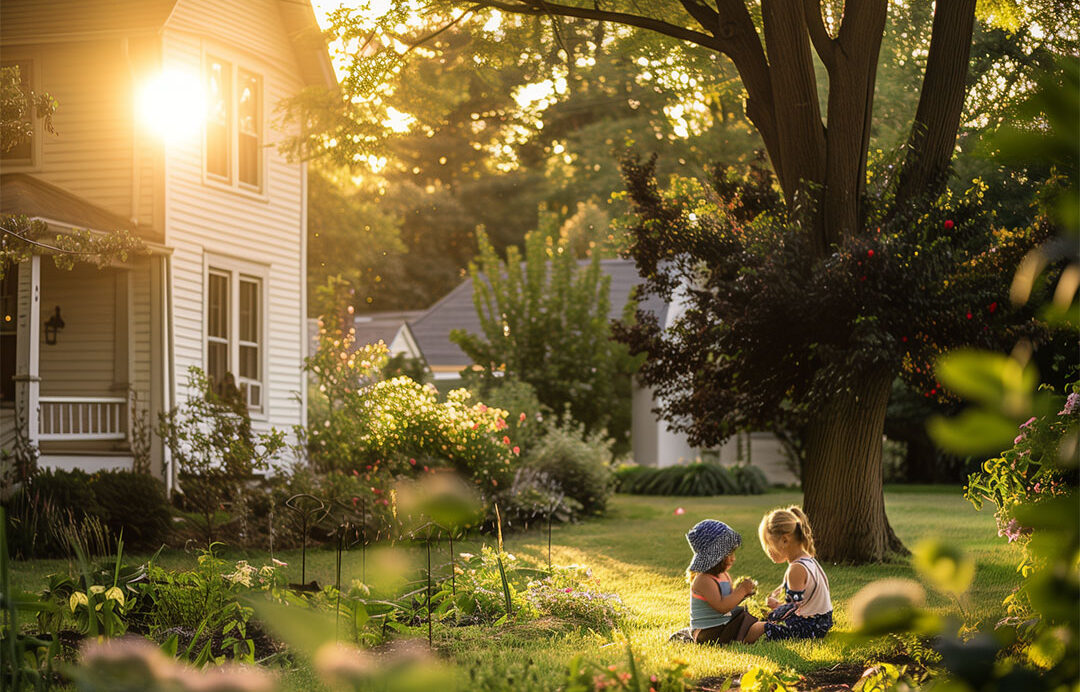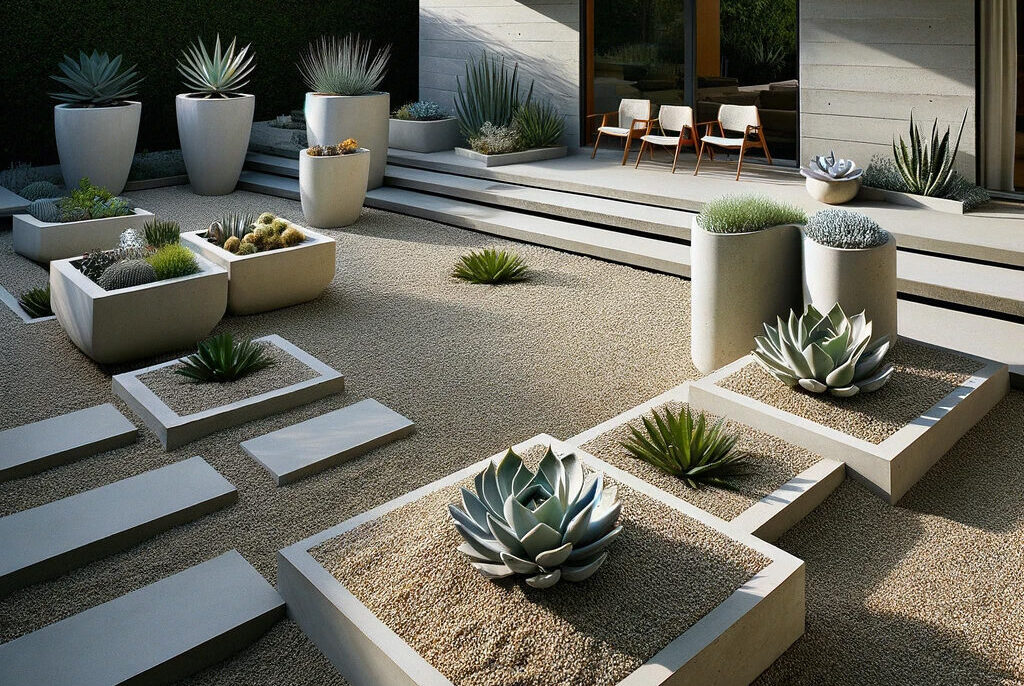With our guide to Flagstone and Gravel Landscaping, you can start making your outdoor area into a beautiful retreat. Find creative ideas and expert advice on how to make beautiful dreamscapes that make your surroundings look better. If you’re thinking about pathways, patios, or other landscaping features, this in-depth look will give you ideas for your next job and help you get beautiful results.
Flagstone and Gravel Landscaping
Are you looking to add a unique and natural touch to your landscaping? Look no further than flagstone and gravel! These two materials are a perfect match for creating beautiful and functional outdoor spaces that will impress your guests and neighbors. Discover the endless possibilities of flagstone and gravel landscaping to elevate your outdoor experience.
What is Flagstone?
Flagstone is a type of natural stone that is typically flat and smooth. It is commonly used in landscaping for walkways, patios, and even walls. Flagstone is available in a variety of colors, shapes, and sizes, making it a versatile choice for any landscaping project. When combined with gravel, flagstone creates a dynamic duo that adds texture, visual interest, and functionality to your outdoor space, making flagstone and gravel landscaping a top choice for homeowners.
Benefits of Flagstone for Landscaping
Flagstone has a number of benefits for landscaping. It is durable, long-lasting, and requires minimal maintenance. It is also slip-resistant, making it a safe choice for walkways and other high-traffic areas. Additionally, the natural beauty of flagstone can add value and curb appeal to your home. When combined with gravel in landscaping projects, flagstone enhances its versatility, providing a unique and natural touch to your outdoor spaces.
Types of Flagstone
There are several types of flagstone available, including sandstone, limestone, and slate. Each type has its own unique characteristics and colors, so it is important to choose the right one for your project. This variety in flagstone options allows you to personalize your landscaping and achieve the perfect synergy with gravel for a stunning outdoor aesthetic.
Choosing the Right Type of Flagstone
When choosing the right type of flagstone, consider the color and texture of the stone, as well as its durability and slip-resistance. You should also consider the size and shape of the stone, as this can affect the overall look and feel of your landscaping project. Combining flagstone with the appropriate type of gravel allows you to create a cohesive design that enhances the beauty and functionality of your outdoor space.
What is Gravel?
Gravel is a type of small, loose stone that is commonly used in landscaping for pathways, driveways, and even as decorative accents. It is available in a variety of colors and sizes, making it a versatile choice for any outdoor space. When paired with flagstone, gravel forms a winning combination that enhances the aesthetic appeal and functionality of your landscaping. Discover the benefits, types, installation, and maintenance tips for this dynamic duo, and elevate your outdoor space with flagstone and gravel landscaping.
Benefits of Gravel for Landscaping
Gravel has several benefits for landscaping. It is low-maintenance, durable, and provides excellent drainage. It is also a cost-effective option compared to other types of landscaping materials. When paired with flagstone, gravel creates a dynamic combination, offering not only practical advantages but also enhancing the visual appeal of your outdoor spaces.
Types of Gravel
There are several types of gravel available, including pea gravel, crushed rock, and river rock. Each type has its own unique characteristics and uses, so it is important to choose the right one for your project. Combining the right type of gravel with flagstone in your landscaping design can create a harmonious and visually appealing outdoor space.
Choosing the Right Type of Gravel
When choosing the right type of gravel, consider the color and texture of the stone, as well as its size and shape. You should also consider the purpose of the gravel, as this can affect the size and depth of the gravel bed. Combining gravel with flagstone allows for a harmonious landscaping design that not only enhances aesthetics but also serves practical purposes in your outdoor space.
Combining Flagstone and Gravel in Landscaping
When choosing the right type of gravel, consider the color and texture of the stone, as well as its size and shape. You should also consider the purpose of the gravel, as this can affect the size and depth of the gravel bed. Combining gravel with flagstone allows for a harmonious landscaping design that not only enhances aesthetics but also serves practical purposes in your outdoor space.
Design Ideas for Flagstone and Gravel Landscaping
There are numerous design ideas for flagstone and gravel landscaping, including creating a natural-looking pathway, using flagstone and gravel to establish a patio or outdoor seating area, or incorporating flagstone and gravel into a water feature or garden. The versatility of these materials allows for creative combinations that can transform your outdoor space into a visually appealing and functional haven.
Installation of Flagstone and Gravel
Installation of flagstone and gravel can be a DIY project, but it is important to have the right tools and knowledge. Flagstone should be installed on a stable base of sand or gravel, and gravel should be installed on a well-compacted base layer. Proper installation ensures the longevity and stability of your flagstone and gravel landscaping, allowing you to enjoy the beauty of your outdoor space for years to come.
Maintenance of Flagstone and Gravel
Maintenance of flagstone and gravel landscaping is minimal, but it is important to keep them clean and free of debris. Flagstone should be sealed every few years to protect it from stains and wear, while gravel should be raked regularly to maintain its appearance. These simple maintenance tasks ensure the long-lasting beauty and functionality of your flagstone and gravel landscaping.
Considerations before using Flagstone and Gravel in Landscaping
Before incorporating flagstone and gravel into your landscaping, consider the climate and soil conditions in your area, the slope of your property, and any drainage issues that may need to be addressed. Additionally, factor in the maintenance requirements and the overall cost of the flagstone and gravel landscaping project to ensure a successful and enduring outdoor design.
Conclusion
Flagstone and gravel are a superb combination for infusing a natural and distinctive touch into your landscaping. Whether you’re crafting a pathway, patio, or another outdoor space, the fusion of these two materials can yield a beautiful and functional area that is sure to leave a lasting impression on your guests and neighbors. For all your landscaping supply needs, reach out to A1 Grass and embark on the journey to bring your dreamscapes to life today!
FAQs
- What is the best type of gravel for landscaping?
The best type of gravel for landscaping depends on the specific needs of your project. Pea gravel is great for pathways and patios due to its smooth texture and comfortable walking surface. Crushed rock, with its angular edges, offers excellent stability for driveways and base layers under flagstone. River rock, with its rounded edges and various sizes, is ideal for decorative accents and drainage solutions. Consider the purpose, aesthetic preferences, and drainage requirements when choosing gravel for your landscaping. - Can flagstone be used for a driveway?
Yes, flagstone can be used for a driveway, but it requires careful installation and maintenance. Due to its natural beauty and durability, flagstone can create a stunning and long-lasting driveway. However, it’s important to choose thicker flagstones to withstand the weight of vehicles and ensure they are properly installed on a solid base material to prevent shifting and cracking. Regular maintenance, including sealing and checking for any movement or damage, is also crucial to preserve the integrity of a flagstone driveway. - How do I install flagstone and gravel?
To install flagstone and gravel, start by planning the design and measuring the area. Remove any grass or soil to create a base, and lay down landscaping fabric to prevent weed growth. For flagstone, add a layer of sand or crushed stone as a base, then lay the flagstones, adjusting them to fit tightly together. Fill gaps between flagstones with sand, crushed gravel, or mortar, depending on the desired look. For gravel areas, after laying the landscaping fabric, spread the gravel evenly over the area to the desired thickness, typically 2-3 inches. Tamp down the gravel to compact and stabilize the surface. - How do I maintain flagstone and gravel?
Maintaining flagstone and gravel is relatively straightforward. For flagstone, regular sweeping and occasional rinsing with water can keep it clean. Sealing the flagstone every few years can help protect its surface from stains and weather damage. For gravel, raking it periodically will help keep the surface even and remove debris. It may also be necessary to add more gravel every few years to replenish areas that have become thin or compacted. - What is the cost of using flagstone and gravel in landscaping?
The cost of using flagstone and gravel in landscaping varies depending on several factors, including the type of materials chosen, the size of the project, and your location. Flagstone is generally more expensive than gravel due to its natural stone qualities and the labor involved in quarrying and shaping the stones. Gravel is more budget-friendly but can vary in price based on the type and color. On average, a DIY flagstone patio project might cost between $15 and $30 per square foot, while gravel costs range from $0.50 to $2 per square foot, depending on the type. Professional installation will add to the overall cost. It’s best to get a detailed estimate from a local supplier or contractor to understand the full scope of expenses for your specific project.
A1 Grass is your go-to landscape supply company, offering premium grass and landscape supplies to landscapers, homeowners, and DIYers aspiring to transform ordinary landscapes into beautiful dreamscapes. Explore our extensive range of products, including essentials for creating stunning flagstone and gravel landscaping projects.
- Bermuda Grass for High-Traffic Areas: Top Resilient Landscaping Solution for 2024
- ZeroScape Landscaping Designs: Crafting a Drought-Tolerant Garden
- Mastering Hardscape Installation in the Dallas-Fort Worth Area: Tips for Success
- Choosing the Perfect Hardscape Materials: A Guide to Enhancing Your Outdoor Space
- 5 Affordable Hardscape DIY ideas: Transform Your Outdoor Space without Breaking the Bank




